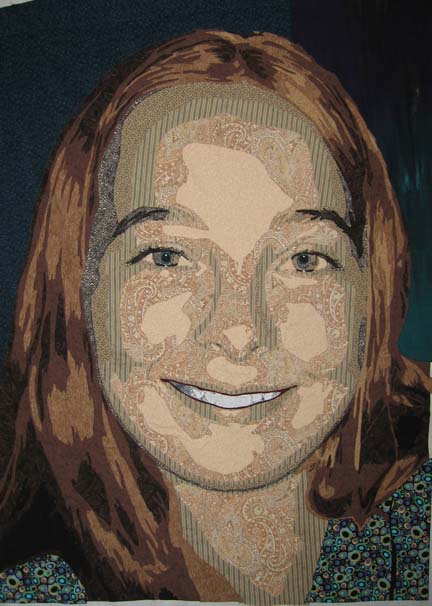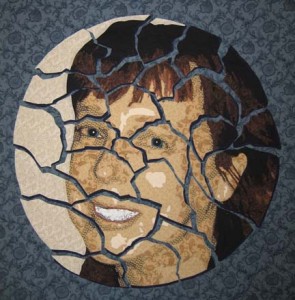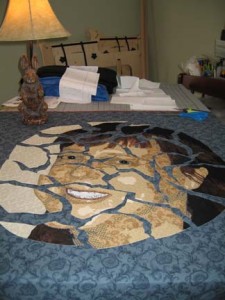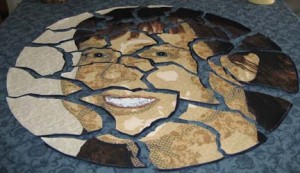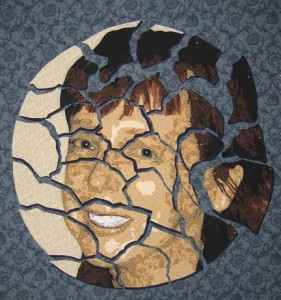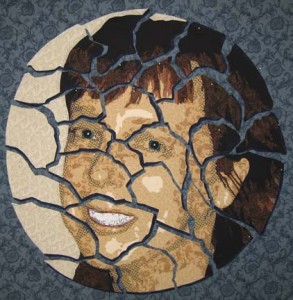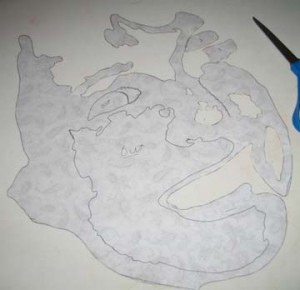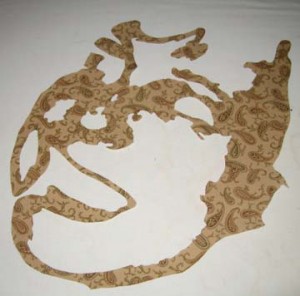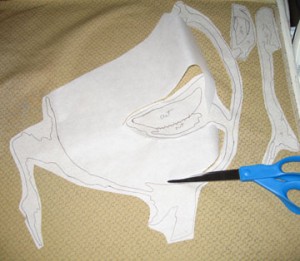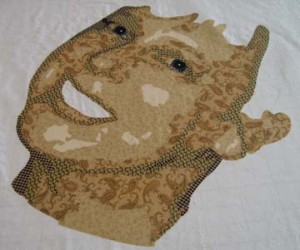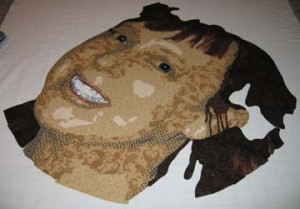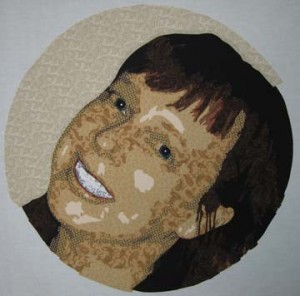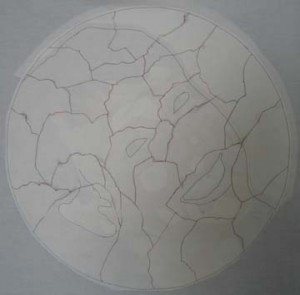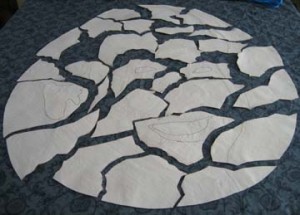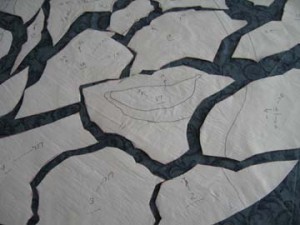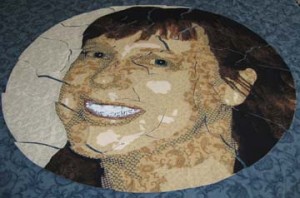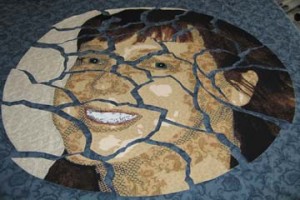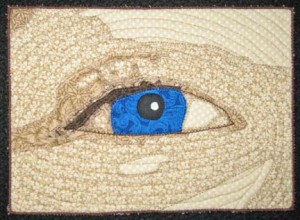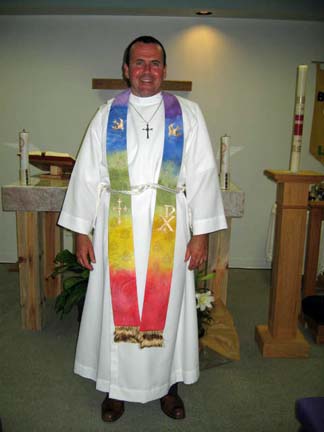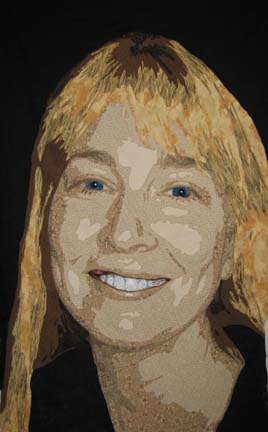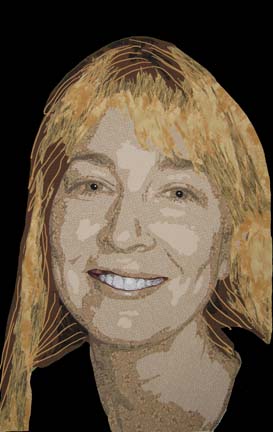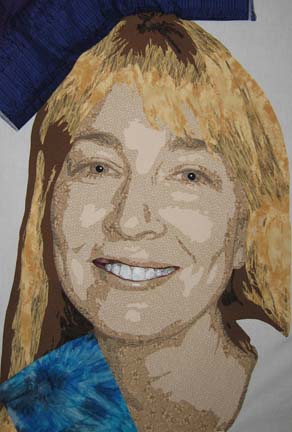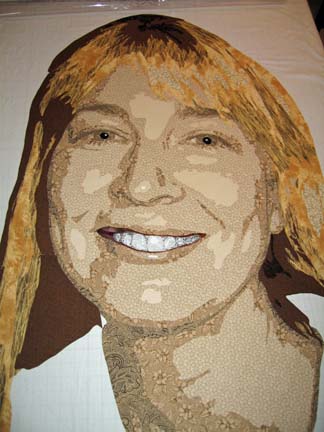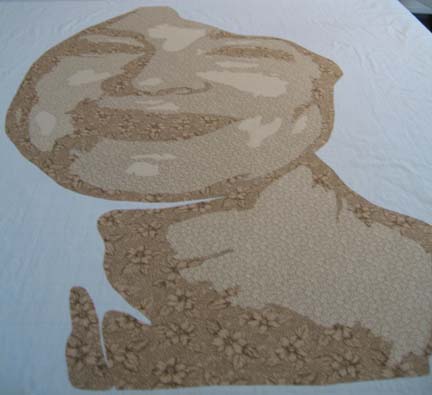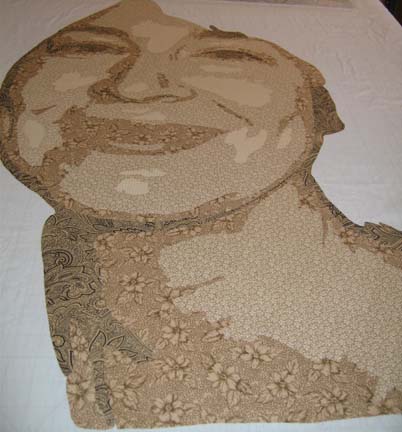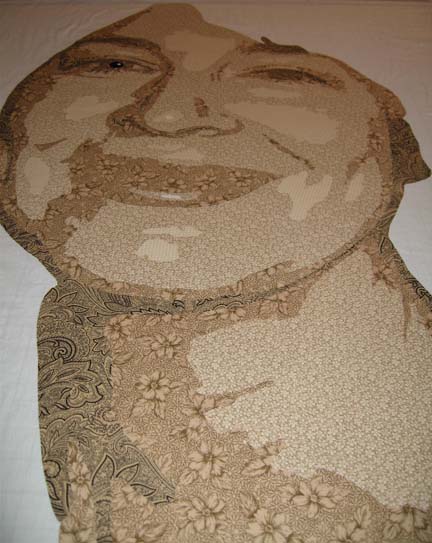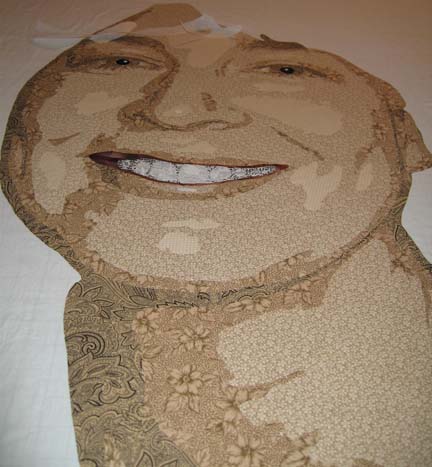The International Quilt Festival is going on this week in Houston. I was lucky to have two quilts juried into their World of Beauty exhibit this year, Adelpho and Unconditional. Unfortunately, I will not get to see them hanging. My quilts travel more than I do. When my husband retires and the children are grown and gone, I hope to go to more shows.
I also had two quilts recently in the East Cobb Quilt Guild: Georgia Celebrates Quilts biannual show here in Atlanta, Sweet Dreams and Shoshanna. Shoshanna won Judge’s Recognition and 2nd Place in the Original Design category.
(Interesting side note — I took my friend that modeled Shoshanna to the show so that she could see it hanging. After the show, I had several quilters tell me that they had seen the woman at the show that looked like the quilt, and I of course assumed that they were talking about my model. Then I received several emails from a woman that had gone to the show earlier in the day and looks a lot like the quilt and hence the model. This is the first time I’ve had this happen. Unfortunately, the visitor to the show really wanted to meet the model, but I couldn’t violate my friend’s privacy.)
As this has been a banner year for me to be in shows (which makes up for only being in one show last year), I am also honored to have two quilts in the Art Quilts XIV: Significant Stitching show at the Chandler Center for the Arts in Chandler, AZ starting in November. Sweet Dreams will travel as will Chameleon.
Enough about me. I haven’t posted in a month and although family obligations keep trying to derail me, I have actually made some progress on a new piece. I’ve been taking a lot of pictures and I’m getting ready to quilt it, but since I’m procrastinating, I thought that I would show you the development of the face. (Keep in mind that all of the pictures except the last two were taken of the piece on a high table — and I’m a short woman — so there is some distortion in the features.)
This is all about layering values. I always (well I do now anyway) start with the lightest value in the face. In one quilt, I used the 2nd value first — and had show through which drove me nuts — so unless the piece of fabric is fairly small, I put down the values from lightest to darkest (which, by the way, is the opposite of how Deidre Scherer does her faces, but she free-hand cuts everything).
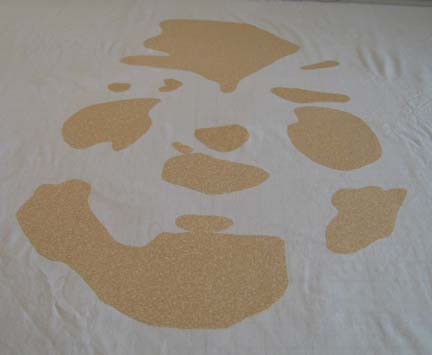
The 2nd value for the face is a bold choice — I admit it. I was pushing the limits of what I thought I could get away with. It is a paisley with tan, stone, and orange in it. There are even some hints at white. I had actually bought this for another quilt & didn’t use it — but the subject in this one is more carefree so I thought I might be able to pull it off.
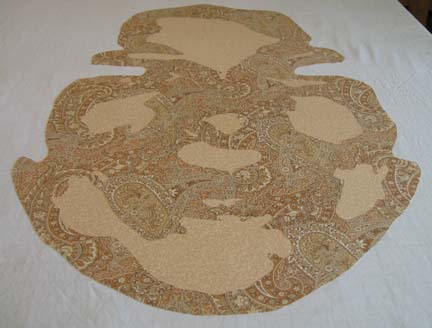
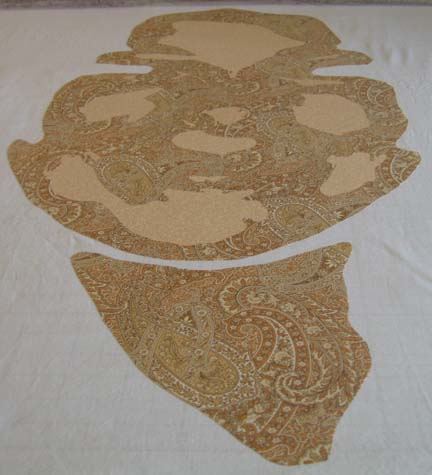
The next value is a tan and blue stripe — but it is more tan than blue so I knew it would work for shading. I worked so hard to make the stripes vertical — and when I was done I wished that I had placed them on an angle. Maybe next time.
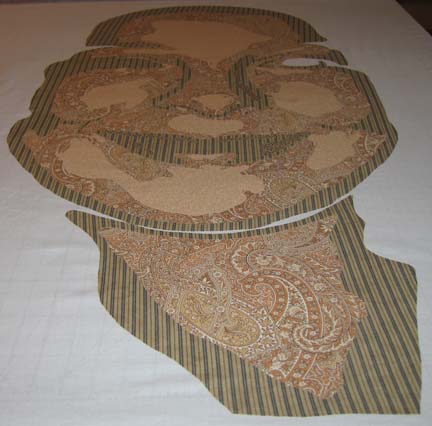
The next value is a little harder to see in this picture — but it is a tan with a small blue floral print. Again — it works for shading.
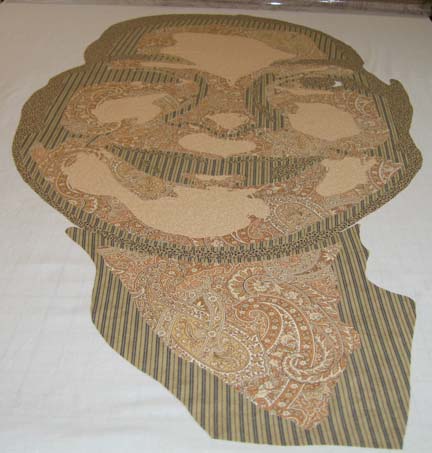
The next value — I’m really pushing what I can find in values — is a small stone and black paisley print — very busy. The stone is too light but I figured that the density of the black will overcome this flaw.
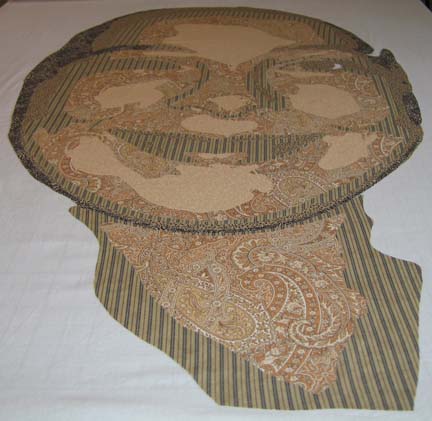
The last value for the face was found in my brown drawer of fabrics. It is a dark taupe with black and helps to outline the eye and the eyebrows.
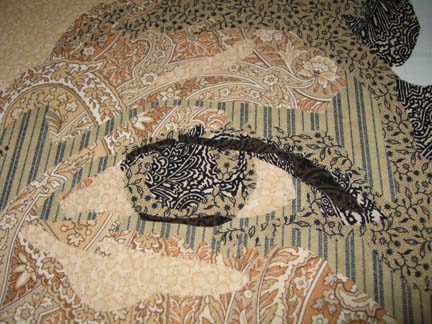
Here you see that I have not added the eyebrows — I got distracted & started working on the eyes. I originally chose a gray blue for the pupils which you will see later I had to change.
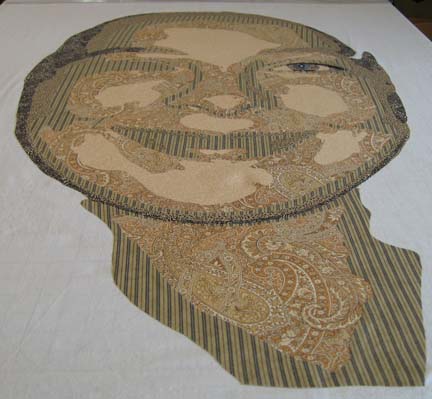
Here are both eyes with the eyebrows.
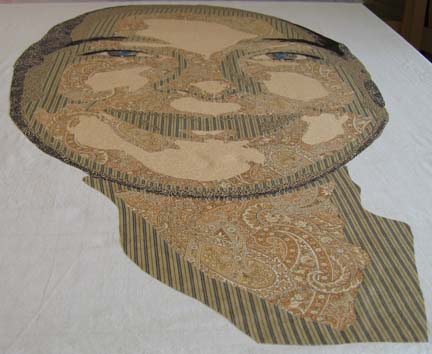
The crowning touch is of course the mouth. It has a red border which signifies the inner edge of the mouth — and the mouth itself with the teeth are constructed from values of white — and by that I mean from white to gray using prints with varying densities of pattern to vary the value. (I do admit that I straightened the teeth of the model. My mom, an oil painter that has done a few portraits, agrees with me that most models like their features to be represented as better than they truly are — regardless of what the mirror tells them.)
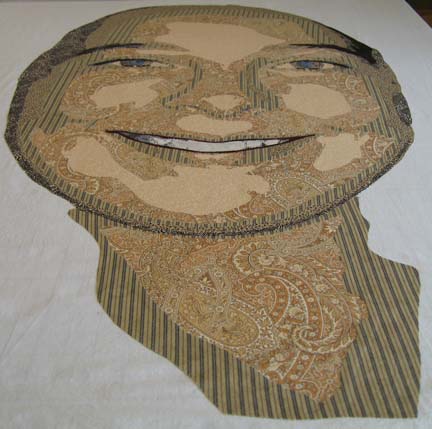
At this point, I start on the hair. This is the first value of brown.
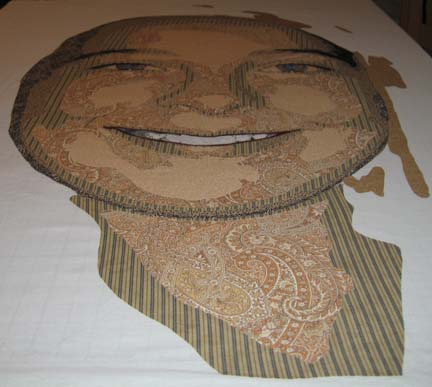
This is the 2nd value — not coming together yet.
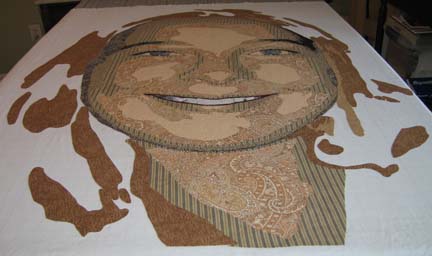
The 3rd value is where most of her hair starts to come together.
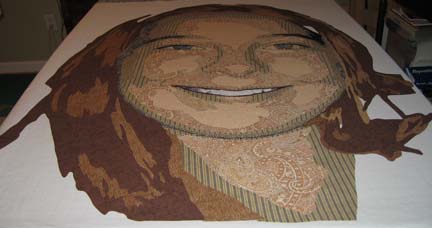
This shows the 4th value of hair.
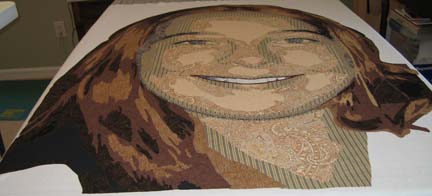
This is the final applique before I start adding the background. I have added some black in the hair — and the eyes need to be changed. The color isn’t strong enough — and they need more work.
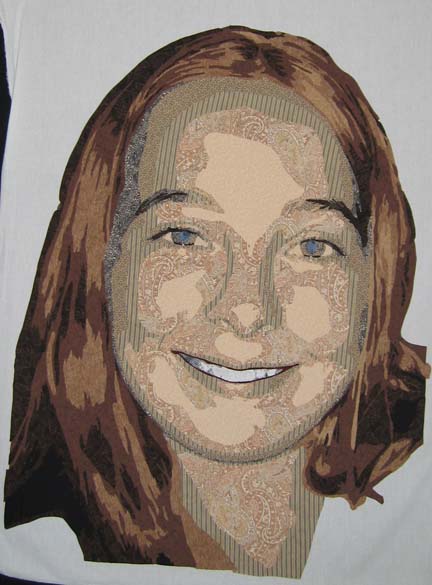
Here I have changed the eyes to a stronger color — a green/blue which is actually the back of the fabric used in the background on the left side of the picture. I had a really hard time with a background for this piece. You want it to support but not detract from the piece — or call too much attention to itself. Again, the fabric I used for the T-shirt is a bold choice, but I wanted something playful to represent the youth of the model. I drove all over town (aren’t I lucky to finally live in a place that has a bunch of fabric stores?) and couldn’t find anything for the background other than the T-shirt fabric. I ended up pulling 2 fabrics — one from my green drawer and one from my blue drawer — which just goes to show that you should never limit yourself by how you or someone else has classified the fabric.
